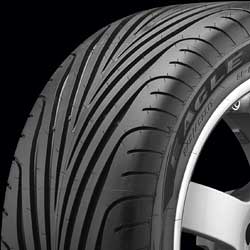It has long been common practice for manufacturers to produce tires in different locations. Different products for different markets. However, the last few years have seen a rise in the number of supposedly identical tires, produced in different locations, with completely different levels of quality. Note that the tires in question are not counterfeits, but genuine tires produced for or by the big name brands.

Goodyear F1 GSD3. Very popular tire in the USA, topping the survey results at online tire seller websites like tirerack.com for some years. The USA only received this tire from the plant in Germany. Asian customers initially had German production tires and market reception was very good. Within about six months tires from the Thai factory started to show up and so did the complaints. The Thai versions look the same, sell for a slightly lower price, and perform very differently from the German ones. The Thai production is okay until pushed a little, where it becomes clear it’s inferior to the German model in that once heated up the tire looses grip and slides very easily, with a greasy feeling. The mileage that owners get from the tires is also far less than the German version. This tire is now obsolete, but there is still stock floating around.

Michelin Pilot Preceda 2. very popular throughout Asia. Initial production in France got a reputation for low noise, great traction wet or dry, and good wear. I fitted a set of these on my old car in 2006 and they were only worn out this year, after two more owners and a total of close to 40,000km. As I understand it they performed as new right to the end.
About two year ago the tire also went into production in Thailand. Right now, only Thai production is available and French production has ceased. Based on the value of that set, the second owner of my red wagon bought another set, not noticing they were the Thai version. They were just replaced after just 20,000km, almost worn out and having deteriorated in terms of ride comfort and grip quite noticeably in the last few thousand kilometers.
Other brands and models have also been reported as showing different results from different production locations, such as Bridgestones made in Taiwan, so it is not just Thailand that has a problem.
While you can expect to get a reasonable level of performance from a big brand tire regardless of where it was made, there are very real differences in quality between production locations and the savings from the lower cost plants are not being passed onto you the consumer. The Michelins mentioned above were just a few percent cheaper than the French production and lasted only half as long, so you can see it’s a false economy to buy on price alone. A smart shopper would search for the tire name and production country to see if there are bad reviews before buying. I won’t say it’s a specialty trick of Taiwanese tire dealers to palm these tires off as premium product, but they are surely profiting by taking advantage of consumer ignorance.
I buy brand name tires and pick those made in a first world country, and preferably the one the company is based in. ie. I try to buy Michelins made in France, Continentals made in Germany, Bridgestones made in Japan and so on.
Another thing to watch out for is product age. Rubber is aged by ozone and sunlight and although tires are protected with grease during molding and kept out of the sun, they still age in storage. Always check the tire sidewalls when buying for the production date. Tire dates are always noted as year and week number, in four digits (YY, WK or WK, YY)

Personally I would not buy a tire made more than six months beforehand if I was planning on using it for a couple of years.
Remember people, if a deal seems to be too good to be true…

